
Today we say farewell to an old and tired friend, my Akai X-1800SD.
I found this open-reel deck about four years ago in a thrift store for about $25. For such a price it seemed right, but even then it was quite beat up. The cover was gone and many of the knobs and light covers has fallen off. The way you see it in the picture below is just about how it was when I found it. Interestingly, the deck worked straight away. I had actually used it at a point to present an english assignment where I had spliced together tape to make a short satire piece about computer response systems. However, as time went on I had wanted to examine it and managed to take it apart several times. After one time of delving far into the electrical system, the transport was the only thing that worked. I could no longer get sound or meter levels from it. After several attempts to find the issue, I decided that it was simply time to use it for something else. Originally when I had given up on it I wanted to turn it into a better deck, one that I could use for recording as I had before, and promptly removed the 8-track deck. However, over the course of the past year I realized that I would appreciate a special-effects tape drive. Something that would be built specifically to play tape loops and be able to play back samples on tape quickly, using some marking scheme that the deck could understand (foil, holes, etc...). It would also be able to aid in making tape loops and tape splices by having a wheel that could be directly connected to the capstan instead of the motor. It wouldn't have take-up reels, but would rather have something similar to the "bins" on paper tape readers of the 70s.
As this idea started forming in my head, I figured that it would be easier to buy a professional deck to do recording. I could then use the parts from the Akai to build this specialized deck, for it really served me little purpose at this point.
To tear the machine to bits was somewhat saddening. Looking over the insides again, it was quite well built, containing some interesting little engineering things that I'll point out in a minute. But first, the unit.

The X-1800SD is a dual-tape deck. It is a 4-track open reel deck and an 8-track cartridge deck. The odd thing about this deck is that it uses this technology called "Cross-field" where a second record head is placed opposite the record-play head. I don't entirely understand it, but the head assembly had an odd system of adjusting the heads to hear different channels on the tape which always baffled me a bit. Also, tapes produced on another machine just played back with odd stereo with this device. A picture of the head assembly:

The one truly neat feature of the deck is the speaker system. Most decks of this era tended to integrate their speakers into the cover for the system. However, this deck used a neat way of saving space. The stereo speakers are mounted facing away from each other on the sides of the case. Hinged metal flaps then cover over them and provide a surface to bounce the sound off of, righting the direction of the speakers and creating a variable spread of the two speakers.
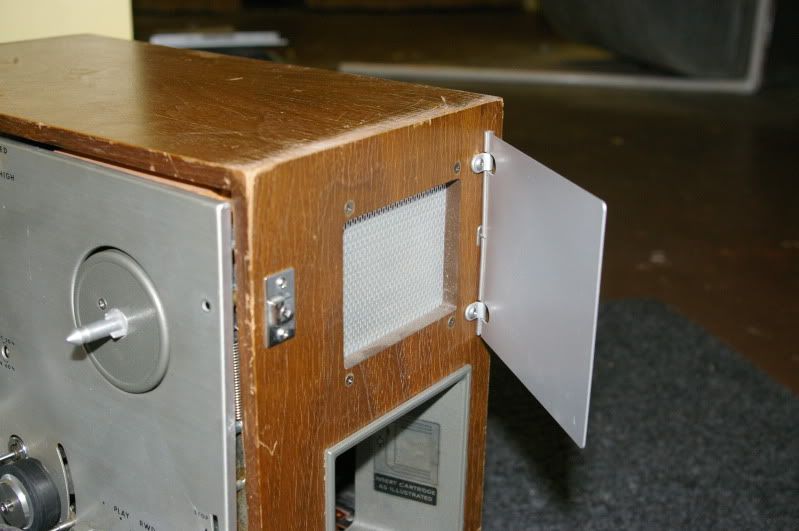
As for not-so-neat features, the way that speed was changed for the open-reel section was one that was obviously done to save space. A tape speed of 3 3/4in was the native setup for the deck. To switch into 1 5/8in speed, a switch at the top of the unit was switched and the motor dropped to half its speed. However, to get a speed of 7 1/2in you had to slip a sleeve around the capstan, doubling its radius. This was the cause of endless trouble when I worked with this deck, for the pinch roller was quite deformed and would cause the sleeve to slip up and off (typically in the middle of some important playback no less). My Realistic TR-101 is a great deal different from this and is truly the way speed controls should be done, with a big knob that swaps some cogs around to go to another speed. This sleeve and deformed pinch roller can be seen in the previous photo too. The pinch roller is a bit hard to see, but there is a ridge along the top edge of it. The sleeve is just above the right corner of the head assembly.
And now for a look inside:

The head assembly with "Cross-Field" head visible:
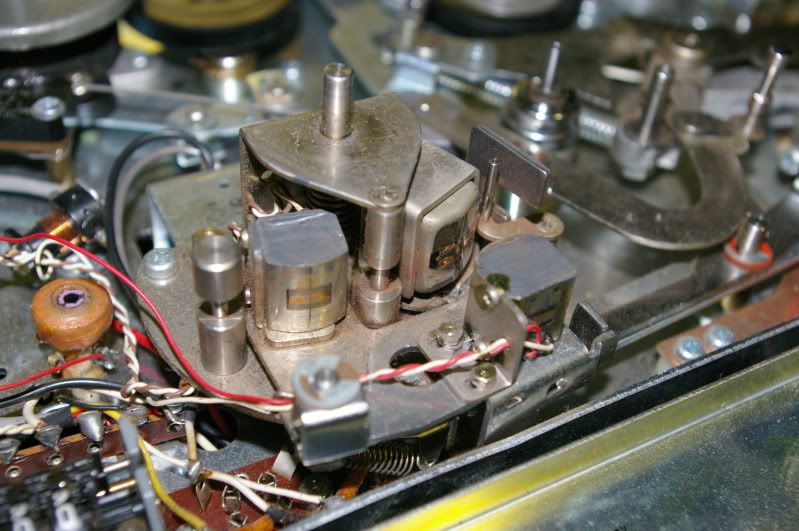
PAH!
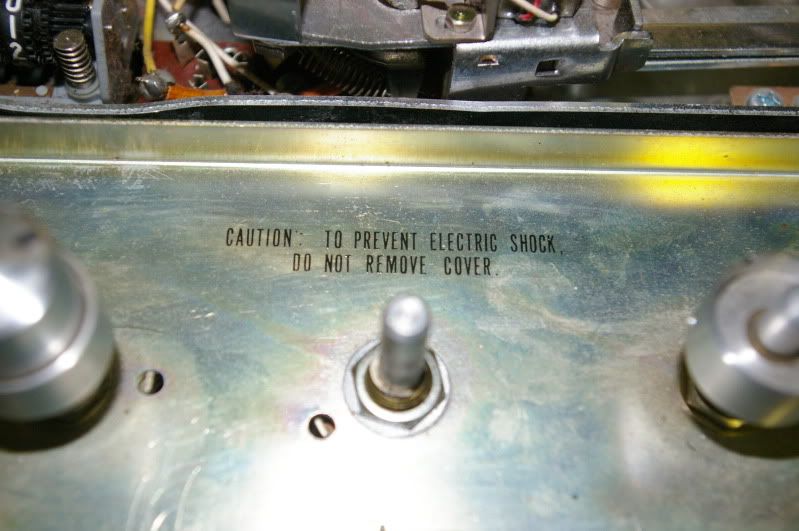
A look at the transport assembly from the back:
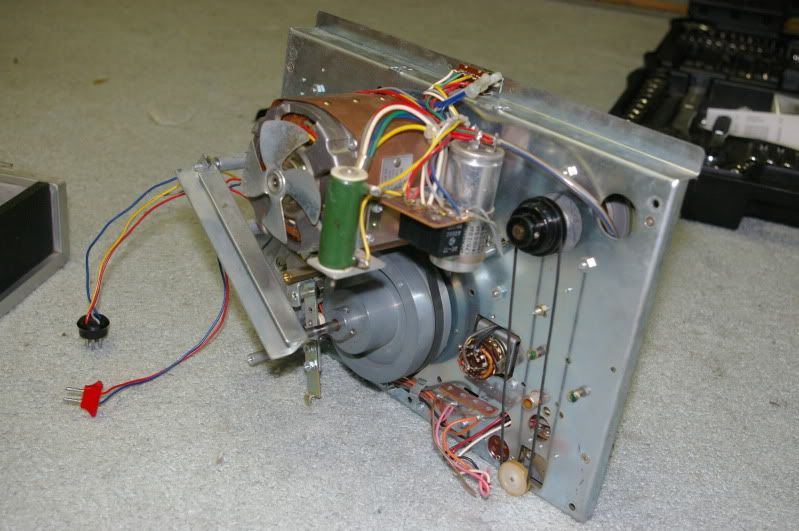
The removed Cart deck:
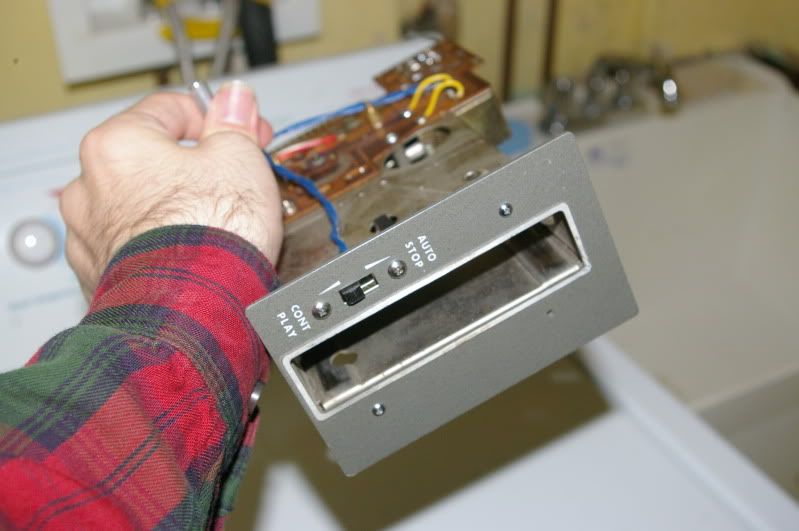
Boom! Head Shot.
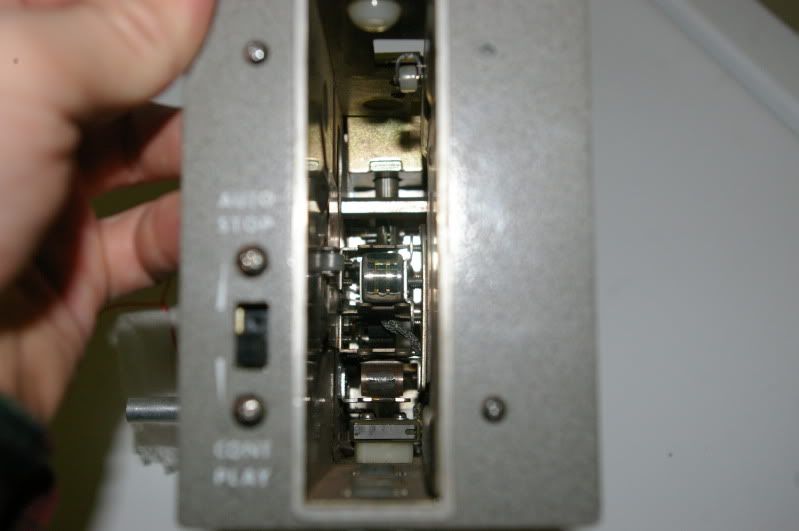
All the electronic bits:
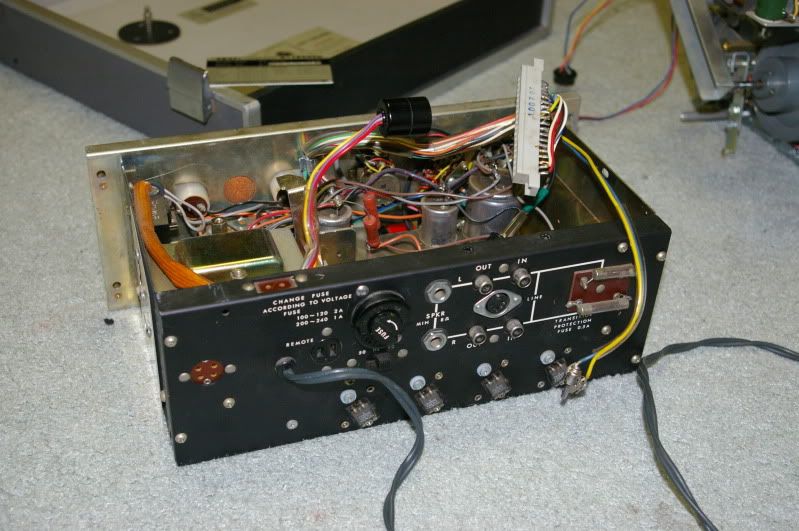
And now onto more neat stuff...
This deck was able to work with many voltages. However, It didn't use one of them new-fangled switching power supplies, so the transformer needed to be strapped manually. In this next picture you see how Akai dealt with this. They places a contact ring around the fuse. When you remove the fuse, you can remove it and then rotate it until it lines up with the proper voltage. This is something that is coming out of it and into the new deck...

It seems I have spotted an engineering change. The transistors mounted on the back are in TO-3 style mounts. It seems this deck may have originally been manufactured with TO-3 transistors on the back instead of these... uh.. others. I have to admit though, I am a bit saddened, for TO-3 transistors just look extremely cool.
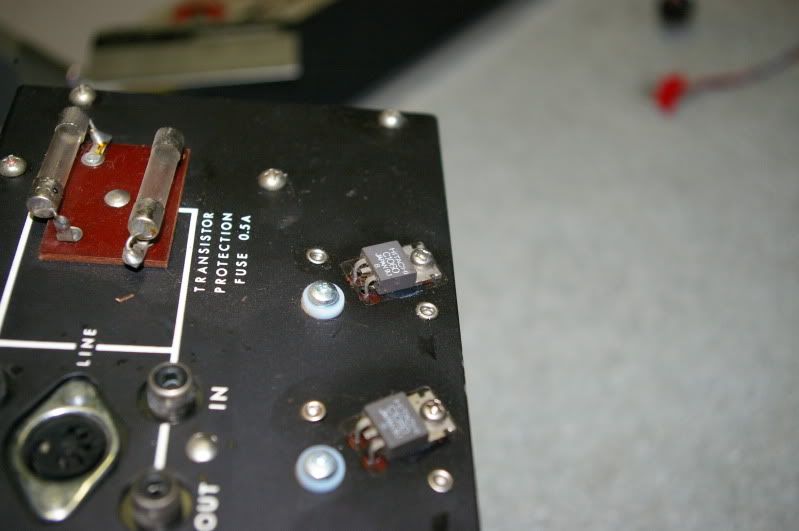
Removing the speakers:

One of the beautiful speaker grilles:
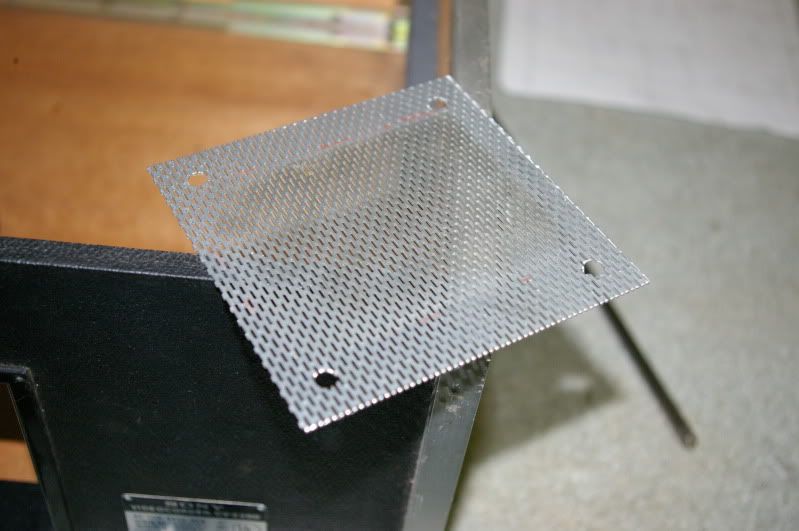
Now this I can't believe. These speakers are ridiculous. They have have cloth lining, no rubber here... (in a consumer-level portable tape deck?)
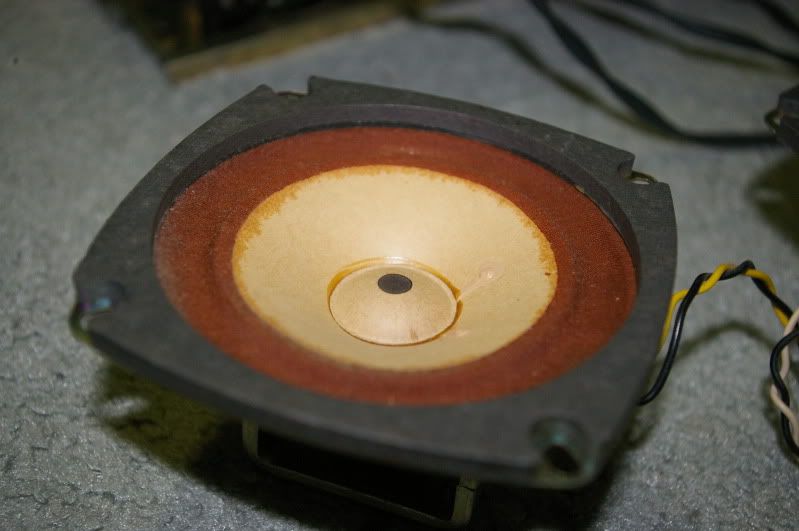
As a quick aside, because I had it out, I thought I would take a picture of its proposed new home, the case of an old Sony CV-2200 videocorder:

This case does require some work though, The feet on one side were quite damaged, so the feet from the Akai have been removed and will soon be put on the Sony case.
And alas, the akai, now a mere shell of itself, sits to be reincarnated into another device (and also partially off to the dump).


No comments:
Post a Comment